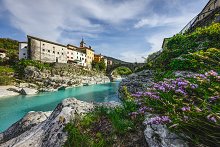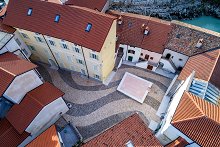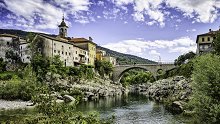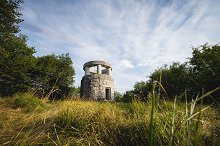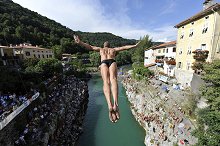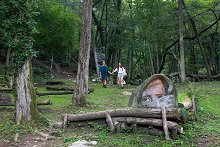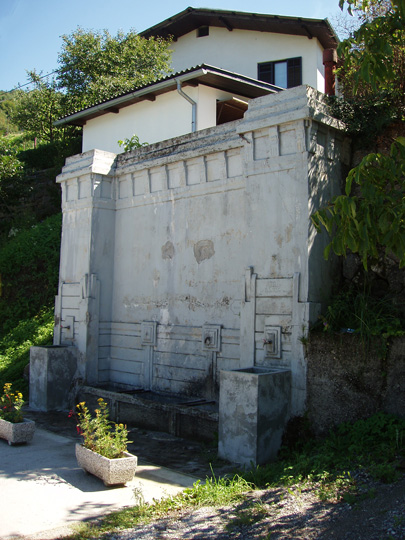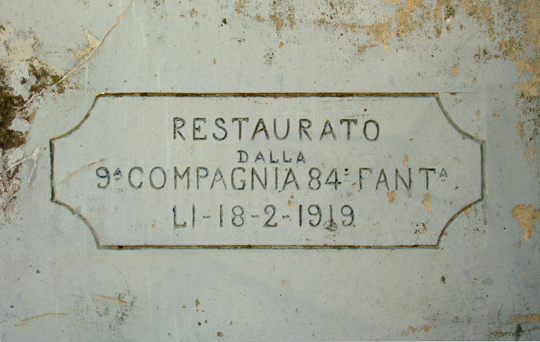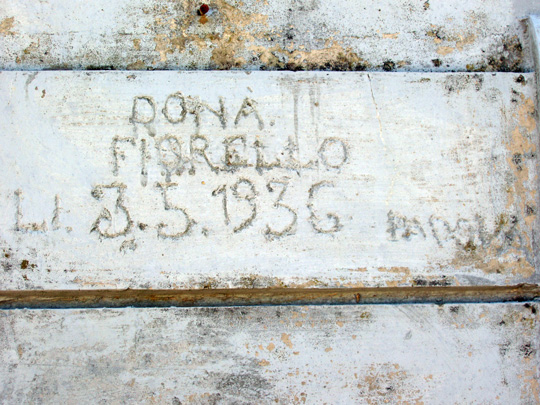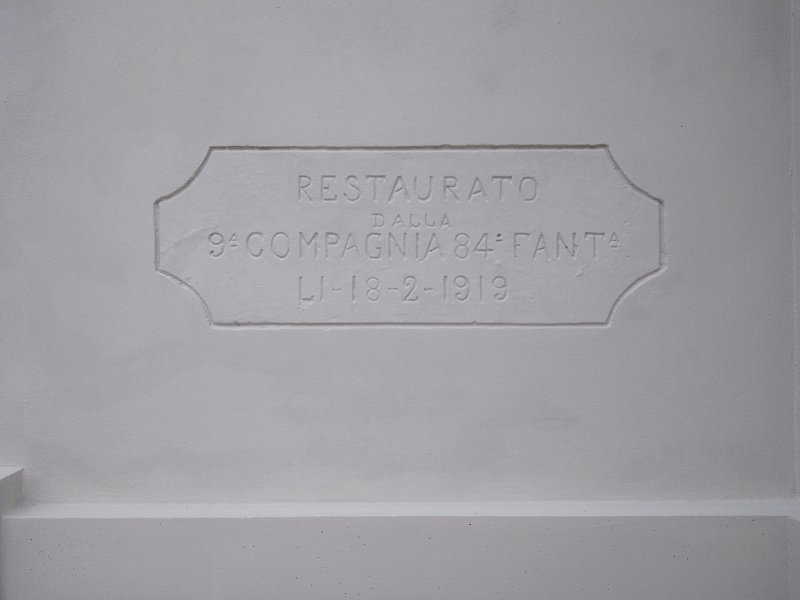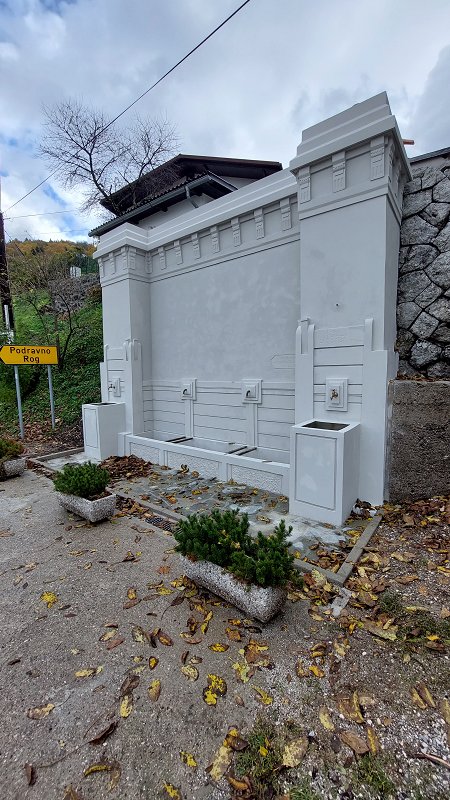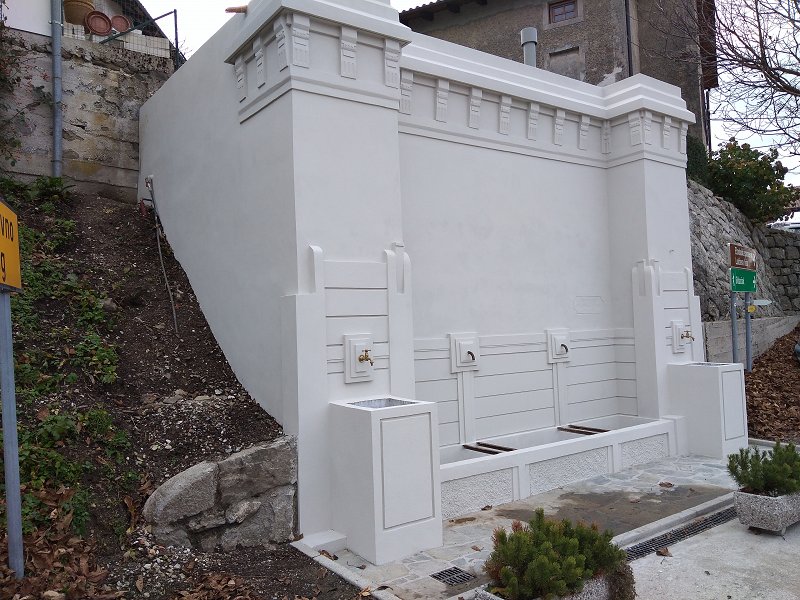Water reservoir Kambreško
The water reservoir in Kambreško is a significant legacy of World War I. It served the needs of the army at the front lines, and also served an important purpose during the post-war period. Lead pipes were used to direct water to the village basin behind the Lukčeva house. The reservoir was divided into an upper part with two basins having taps - and a lower part with a cattle water trough. The parts were separated from each other by a stone wall. The locals called it "f׳ntana", "at the fountain" or a cattle water trough.
On 25 May 1915, an Italian soldier and the military police entered Kambreško for the first time.
The construction of the reservoir was started and completed by the Water Installation Service of the Italian Second Army – "Servizio Idrico della II. Armata” (data obtained from the Roveretto Military Museum), 10 June 1916.
After the 12th Isonzo Offensive (October 1917), the exterior of the reservoir became damaged, so it was renovated in 1919. The caption above the left tap "Restaurato dalla 9A compagnia 84 fantA LI 18-2-1919" was carved by a soldier from Padova while serving in the army in Kambreško. Engraved in cement, it is still visible today.
The original wooden sign above the left basin was partially preserved until an earthquake hit in 1976; the wedge is still visible in the wall today.
From World War I until post-earthquake times during the 70s of the 20th century, when water flowed to homes in the village through pipes, the reservoir was merely used as a cattle trough. Water for households and laundry was poured from the side taps.
In summer, due to water-saving measures, water was not used for washing. Laundry was taken for washing by train and carriage to "Kojsk" – a stream below the hamlet of Rog. In the summer, drinking water was obtained from a water spring under Cek's house (Cekova hiša) – today, there is a water storage tank in this place. The water in the reservoir was always available, even during severe winters - and it would never freeze.
With plumbing and progress, livestock was slowly disappearing, as was the use of the reservoir.
Today, the reservoir is an important part of this area's cultural heritage.
Written by: Strgar Jožica
Photo: Gvido Alliney, www.prohereditate.com
